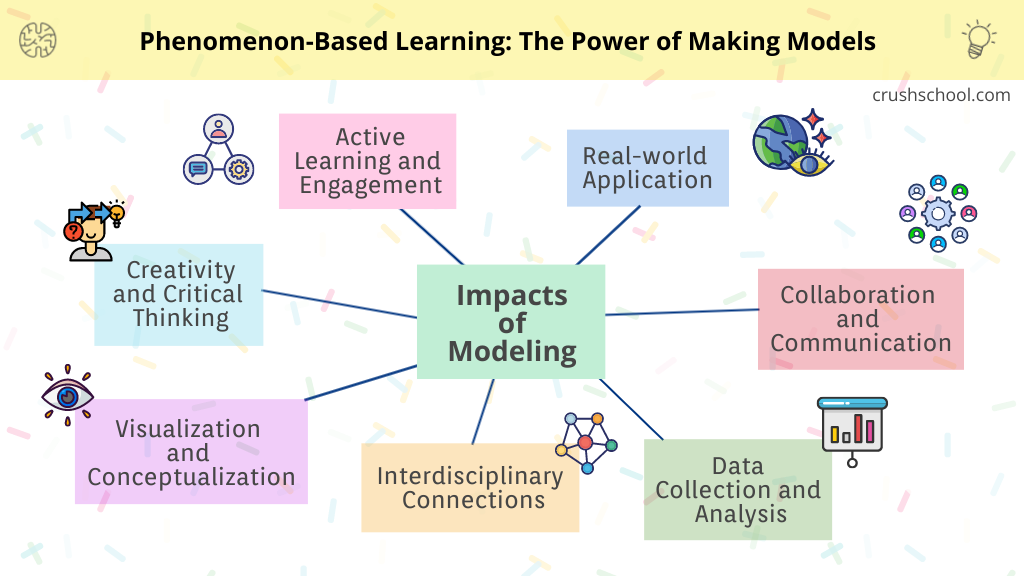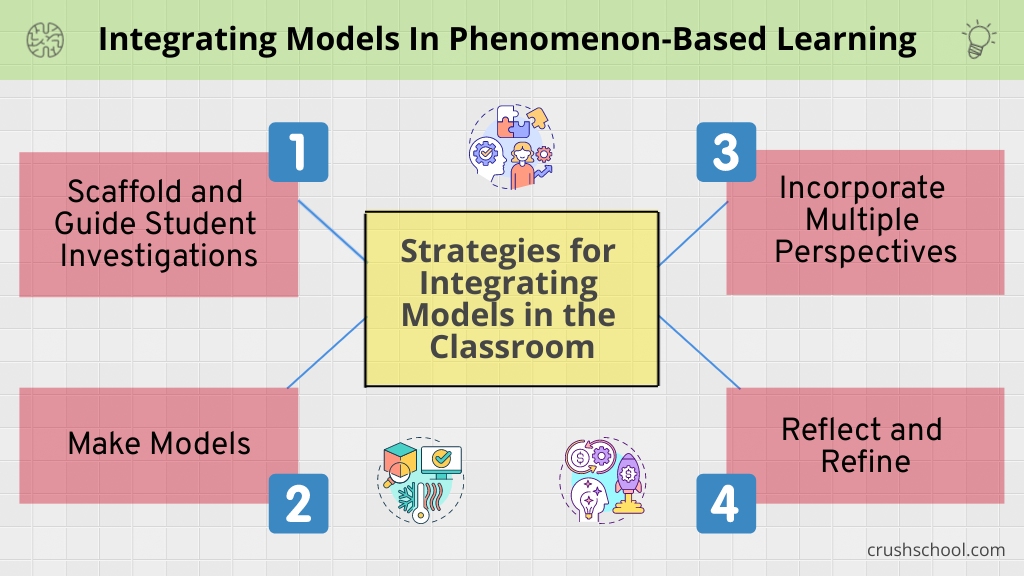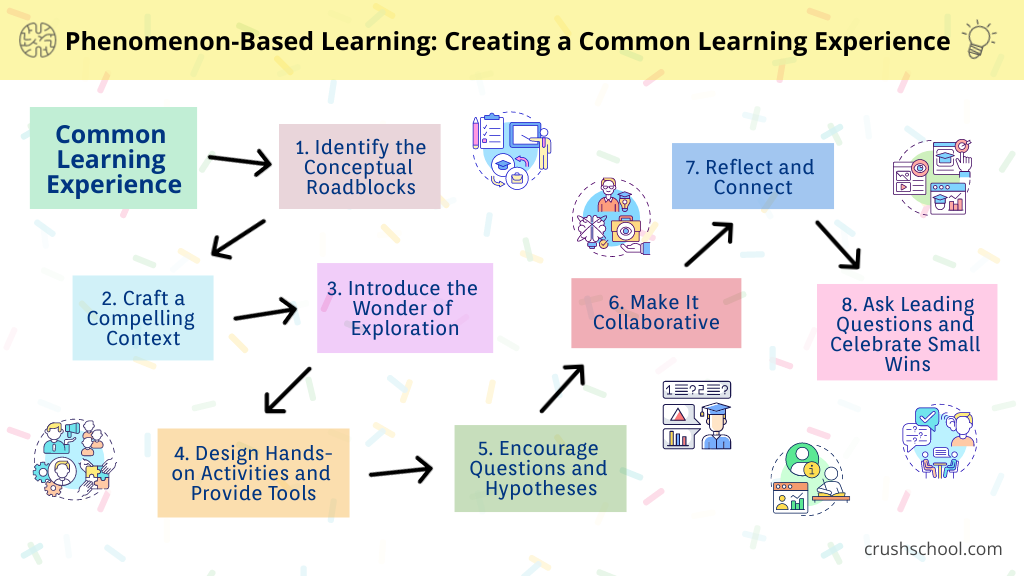Phenomenon-Based Learning: Model-Making Tools
Phenomenon-Based Learning (PhenBL) ignites curiosity, promotes critical thinking, and fosters an in-depth understanding of the world through the use of phenomena as starting points that challenge students to explore and unravel their mysteries through self-directed investigation.
But while investigating phenomena provides the mystery, the full potential of Phenomenon-Based Learning is unlocked through student creation of models that further understanding of the core and supporting ideas behind the phenomenon. This is because by providing students with model making tools, we equip them with the means to visualize, experiment with, and make sense of complex concepts in an active, engaging way.
In the previous article, I discussed how to help students make and use models. In this one, I want to explore how model making enriches the PhenBL experience and provide you with a list of model making tools, starting with the essentials and ending with the (almost) impossibles.
The Power of Making Models in the classroom
There are many benefits to having students make models in the classroom. All of them help students acquire and practice skills they’ll need to further their education and careers. The graphic below shows a few important ones.
Model making tools
Model making materials enable students to visualize complex concepts. By constructing models, they gain a clearer understanding of how different elements interact and how different systems work. This is because models nurture deeper conceptualization of the phenomenon at hand (How to introduce the 4 types of models to students).
The list below contains all of the Amazon links I emailed to our school district science guy (you know) before the term in which I was to start Phenomenon-Based Learning in Earth and Space Science. I spent the time looking for the best deals - both in terms of price and amount of each material needed to last me two to three years. I am confident I did a decent job, but if you find a better deal on anything, please leave a link in the comments below.
The Essentials
Physical Models:
cardboard, paper towel tubes, plastic bottles, and other recycled materials
glue guns (8 + 30 glue sticks) and glue sticks
Visual (not Computer-Generated) Models:
pastel paper (multicolored)
colored pencils or markers or both?
rulers and protractors
clear tape and paper tape (multicolored)
compasses or circle makers or both?
The Nice to Haves
Mathematical and Computer-Generated Visual Models:
laptops or desktops or tablets
graphical visualization software / apps
digital simulation tools
Graphical visualization tools such as Excel or Google Sheets are great for creating graphs, charts, and diagrams to represent data and patterns and help students the communicate their findings. Other tools such as Canva and Piktochart help in creating posters, infographics, concept maps, flowcharts etc.
Digital simulation tools, such as Minecraft or PhET let students create and manipulate complex simulations that might be challenging to achieve physically.
While these digital tools are pretty standard these days and it is important to help students learn how to use them to make computational models, they can often be replaced with visual and physical models that use traditional prototyping materials.
The Awesomes
microcontrollers
data sensors
Integrating microcontrollers and sensors such as Vernier, Vex, or Arduino into models can make them interactive, enabling students to collect and analyze real-time data related to the phenomenon being studied.
The Almost Impossibles (But Not Really)
Augmented Reality (AR)
Virtual Reality (VR)
AR and VR technologies allow students to immerse themselves in virtual representations of the phenomena, providing an incredible sense of presence and engagement. My hope is these tools will soon become widely available for classroom use.
Model Everywhere and all the time
Because why not?
Instead of students just telling you about a concept, have them show you and explain it as they show you. Models can be as simple as a poster that explains and exemplifies a concept or as complex as a virtual world one can walk through to learn about something. The key is to provide students with multiple opportunities to make them. Hopefully, this will help them make a good life for themselves and others.
Sign up for my Teaching Tips, Resources, & Ideas Newsletter to get the next article when it drops. It’s totally free.
*Disclosure: I only recommend products I use myself. This post contains affiliate links at no cost to you that may earn me a small commission to help pay for this website.
BOOKS & TOOLS
- September 2025 2
- August 2025 5
- July 2025 4
- June 2025 2
- August 2024 2
- July 2024 2
- June 2024 1
- October 2023 1
- September 2023 3
- August 2023 6
- July 2023 6
- July 2022 2
- June 2022 1
- November 2020 3
- October 2020 3
- April 2020 1
- March 2020 5
- July 2019 1
- June 2019 1
- April 2019 1
- January 2019 1
- November 2018 3
- October 2018 2
- September 2018 1
- August 2018 8
- July 2018 11
- June 2018 4
- May 2018 5
- April 2018 2
- March 2018 4
- February 2018 5
- January 2018 3
- December 2017 1
- November 2017 5
- October 2017 7
- September 2017 6
- August 2017 5
- July 2017 3
- June 2017 10
- May 2017 7
- April 2017 7
- March 2017 15
- February 2017 12
- January 2017 13
- December 2016 15
- November 2016 8
- October 2016 7
- September 2016 12
- August 2016 14
- July 2016 10
- June 2016 13
- May 2016 10
- April 2016 8
- March 2016 5
- February 2016 7
- January 2016 6
- December 2015 5
- November 2015 8
- October 2015 2















